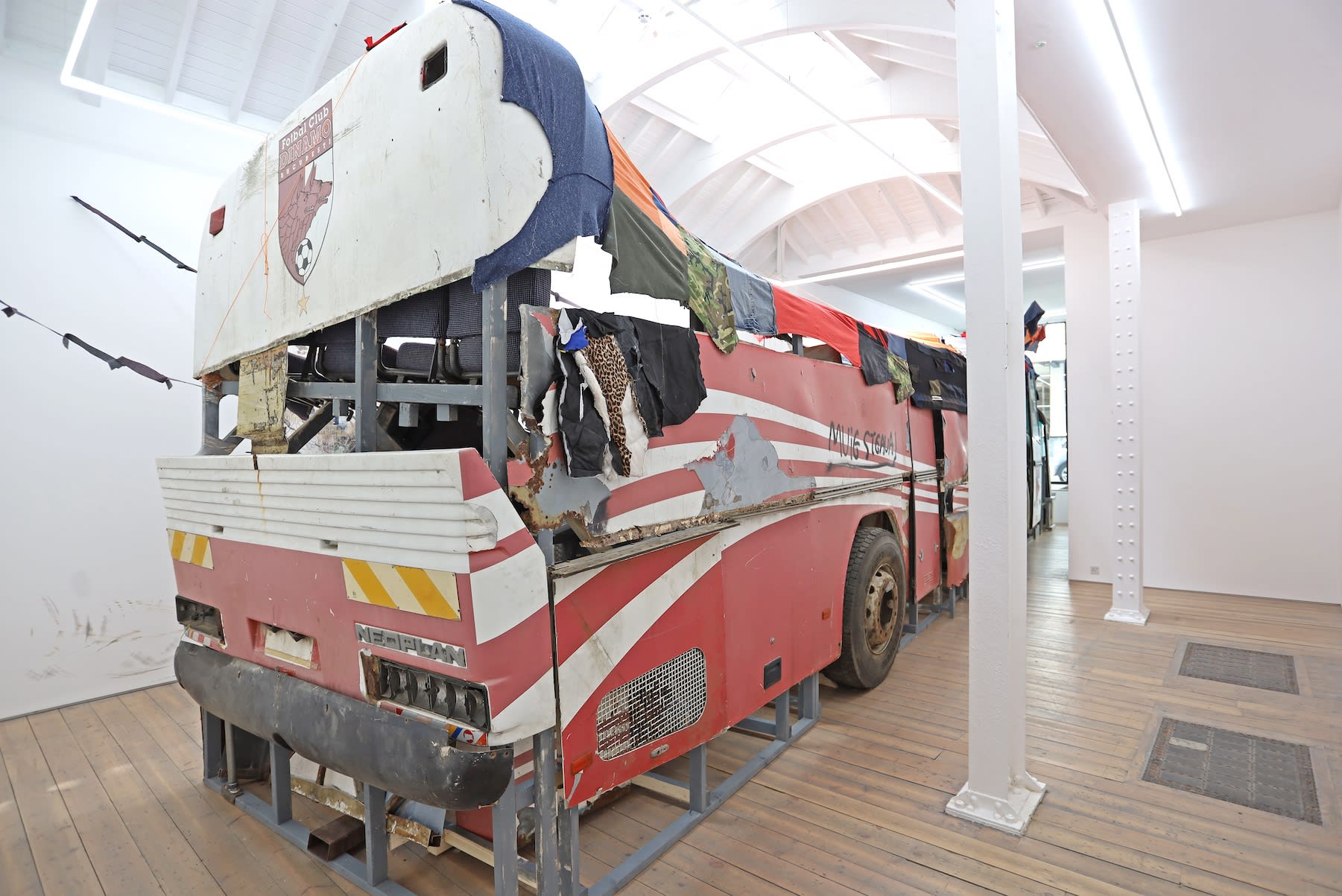07 June 2023 In London 125 galleries network to bring British and international curators and collectors into their spaces.
In order to enhance the value of an artist's work, it is essential to have contact with the curator, who exhibits it in museums and institutions, the true certifiers of artistic significance. It is, therefore, a winning strategy that of the London galleries, which for the third year have joined forces in the London Gallery Weekend from 2 to 4 June, inviting at their own expense (thanks also to the support of the Art Fund) 20 British curators from institutions that often do not have budgets for travel and - new this year - four international curators. Among them, also the Italian Lorenzo Balbi, director of Mambo in Bologna, who turned out to be one of the international names most proposed by the participating galleries.
The event
The idea for Gallery Weekend in London originated with the pandemic and emanated from a group on WhatsApp started by well-known gallery owner Sadie Coles. "At that moment we all found ourselves in conversation," commented Jeremy Epstein of Edel Assanti, founder and director of London Gallery Weekend, "so we wanted to carry on that dialogue and celebrate London's galleries by creating a second international meeting point in addition to Frieze, when between fairs and museums it is difficult to find time to visit the full range of galleries that make up London's diverse community."
Today the event brings together around 125 galleries in the three main areas of Central, South and East London, who pay a participation fee ranging from £600 to £3,300 depending on the size of the gallery (understood in terms of staff). Within this range, each gallery sets the fee at its own discretion, without the others knowing. In return, they are included in the website with an interactive map, in the communication and, in addition, a VIP programme is organised with three guests from each gallery accessing a shuttle service, visits to artists' studios and private collections. "We work with a number of sponsors whose support is greatly appreciated, particularly given the difficult climate in post-pandemic fundraising," commented Jeremy Epstein.
Themes
An important aspect for the organisers is the social component of art and inclusiveness, also in order to involve a new audience, perhaps used to going to museums in the city, but unaware of the cultural offerings of the galleries. This is why a programme of performances in the squares, guided tours, tours and workshops has been organised. "It is a very useful format to get a broad overview of London's galleries," commented Mambo director Lorenzo Balbi. "It is very stimulating to see where the galleries are located and how they dialogue with the space, whereas at the fair you have an 'anaesthetised' perception from the stand format. I like exhibitions that challenge space, as in the case of Marcin Dudek at Edel Assanti, who placed a busload of Romanian fans in the gallery space".

Marcin Dudek: NEOPLAN, installation view, Edel Assanti, London, 2023.
In general, the quality of the offer is high. "Some galleries presented museum-quality exhibitions, both monographic and collective," said Balbi. For example, at Pace there is a dialogue curated by former Pompidou director Alfred Pacquement between Lee Ufan and Claude Villiat, founders respectively of the art movements Mono-ha in Japan and Supports/Surfaces in France. At Lisson, the exhibition 'Matter as Actor' focused on matter in all its forms, emphasising its cultural and historical aspect. Personal exhibitions included Gary Simmons' show at Hauser & Wirth, the first in the London gallery, and Jane Dickson's show at Alison Jacques, the first in the city for twenty years.
In general, painting remains the dominant genre, but it is veering more and more towards abstraction. "Interest has shifted to genres that could not be easily experienced during the pandemic," explained Balbi, "such as abstraction and performance, in fact, another very present theme is the relationship with the body. And then the focus on Afro-descendant or African Diaspora artists persists'. The only note, the lack of connection with the institutions, in fact, some museums were in the process of being set up.
Young galleries
And if in the central areas of the city, such as Mayfair, the proposals focus on historical or established names and a high price range, in South and East London, on the other hand, emerging artists are being discovered. In neighbourhoods such as Peckham and Debtford, multi-ethnic areas once considered dangerous and now become lively and fashionable places full of clubs and galleries, there are must-see addresses with emerging British artists such as George Rouy at Hannah Barry Gallery, Max Wade at Sid Motion Gallery, Estefanía B Flores at Xxijra Hii and Georgina Hill at South London. The presence of abstract painting is also strong here, but also the exploration of identity and the body in relation to space and environment. Individual stories that become part of a broader socio-political narrative and an observation of the present and future.


